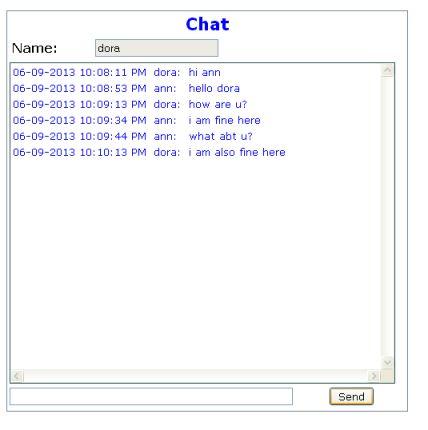web 开发过程中经常会需要进行参数验证,laravel 中我们常用 validator 或者 request 这两种方法来进行验证,但是这两种验证都不是很方便进行自定义提示信息,自定义验证规则,所以下面来介绍一种很方便的用法:
新建抽象类
<?php
namespace App\Http\Validators;
use Validator;
abstract class AbstractValidator
{
/**
* Validator
*
* @var \Illuminate\Validation\Factory
*/
protected $validator;
/**
* Validation data key => value array
*
* @var array
*/
protected $data = array();
/**
* Validation errors
*
* @var array
*/
protected $errors = array();
/**
* Validation rules
*
* @var array
*/
protected $rules = array();
/**
* Validation messages
*
* @var array
*/
protected $messages = array();
/**
* Validation codes
*
* @var array
*/
protected $codes = array();
public function __construct(array $data)
{
$this->data = $data;
$this->before();
$this->validator = Validator::make($this->data, $this->rules, $this->messages);
$this->after();
}
/**
* Set data to validate
*
* @return validator
*/
public function getValidator()
{
return $this->validator;
}
/**
* Set data to validate
*
* @return $this
*/
public function with(array $data)
{
$this->data = $data;
$this->before();
$this->validator = $this->validator->make($this->data, $this->rules, $this->messages);
$this->after();
return $this;
}
/**
* Validation passes or fails
*
* @return boolean
*/
public function passes()
{
if ($this->validator->fails()) {
$this->errors = $this->validator->messages();
return false;
}
return true;
}
/**
* Return errors, if any
*
* @return array
*/
public function errors()
{
return $this->errors;
}
/**
* Return errors codes, if any
*
* @return array
*/
public function getCodes()
{
return $this->codes;
}
/**
* getRules
*
* @return array
*/
public function getRules()
{
return $this->rules;
}
/**
* getData
*
* @return array
*/
public function getData()
{
return $this->data;
}
/**
* getErrors
*
* @return array
*/
public function getErrors()
{
return $this->errors;
}
/**
* getMessages
*
* @return array
*/
public function getMessages()
{
return $this->messages;
}
/**
* setRule
*
* @param string $key
* @param string $value
*
* @return $this
*/
public function setRule($key, $value)
{
$this->rules[$key] = $value;
return $this;
}
/**
* emptyRules
*
* @return $this
*/
public function emptyRules()
{
$this->rules = array();
return $this;
}
/**
* sometimes
*
* @param string $attribute
* @param string|array $rules
* @param callable $callback
*
* @return $this
*/
public function sometimes($attribute, $rules, callable $callback)
{
$this->validator->sometimes($attribute, $rules, $callback);
return $this;
}
/**
* resolver
*
* @param Closure $resolver
*
* @return $this
*/
public function resolver(Closure $resolver)
{
Validator::resolver($resolver);
return $this;
}
/**
* replacer
*
* @param Closure $resolver
*
* @return $this
*/
public function replacer($replace, Closure $resolver)
{
Validator::replacer($replace, $resolver);
return $this;
}
/**
* extendImplicit
*
* @param Closure $resolver
*
* @return $this
*/
public function extendImplicit($extendImplicit, Closure $resolver)
{
Validator::extendImplicit($extendImplicit, $resolver);
return $this;
}
/**
* extend
*
* @param string $rule
* @param \Closure|string $extension
* @param string $message
*
* @return $this
*/
public function extend($rule, $extension, $message = null)
{
Validator::extend($rule, $extension, $message);
return $this;
}
/**
* before (extend(),resolver())
*
* @return $this
*/
public function before()
{
}
/**
* after(sometimes())
*
* @return $this
*/
public function after()
{
}
}
新建中间件
<?php
namespace App\Http\Middleware;
use Closure;
use \Illuminate\Http\Request;
class ValidateAdminMiddleware
{
/**
* This namespace is applied to the controller routes in your routes file.
*
* In addition, it is set as the URL generator's root namespace.
*
* @var string
*/
protected $namespace = 'App\Http\Validators';
/**
* Handle an incoming request.
*
* @param \Illuminate\Http\Request $request
* @param \Closure $next
*
* @return mixed
*/
public function handle(Request $request, Closure $next, $validator = null)
{
if ($request->isMethod('POST')) {
$type = $request->segment(1);
if ($validator) {
$validator = $this->namespace . '\\' . studly_case($type) . '\\' . studly_case($validator) . 'Validator';
$validator = new $validator($request->all());
if (!$validator->passes()) {
if ($request->isAjax()) {
return $validator->errors()->first();
} else {
return redirect()->back()
->withErrors($validator->getValidator())
->withInput();
}
}
}
}
return $next($request);
}
}
新建 TestTestValidator
<?php
namespace App\Http\Validators\Admin;
use App\Http\Validators\AbstractValidator;
class TestValidator extends AbstractValidator
{
/**
* Validation rules
*
* @var Array
*/
protected $rules = array(
'name' => ['required', 'test', 'min:1'],
);
/**
* Validation messages
*
* @var Array
*/
protected $messages = array(
'name.required' => '必填',
'name.min' => '最少1个字符',
'name.test' => '测试',
);
/**
* 自定义验证规则或者扩展Validator类
*/
public function before()
{
$this->extend('test', function ($attribute, $value, $parameters) {
return bool;
});
}
}
路由中如何使用
Route::post('/', ['middleware' => ['valiAdmin:Test'], 'uses' => 'IndexController@test']);
具体使用可以自行配置~
到此这篇关于如何优雅的使用 laravel 的 validator验证方法就介绍到这了。对待生命你不妨大胆冒险一点儿,因为好歹你要失去它。更多相关如何优雅的使用 laravel 的 validator验证方法内容请查看相关栏目,小编编辑不易,再次感谢大家的支持!





